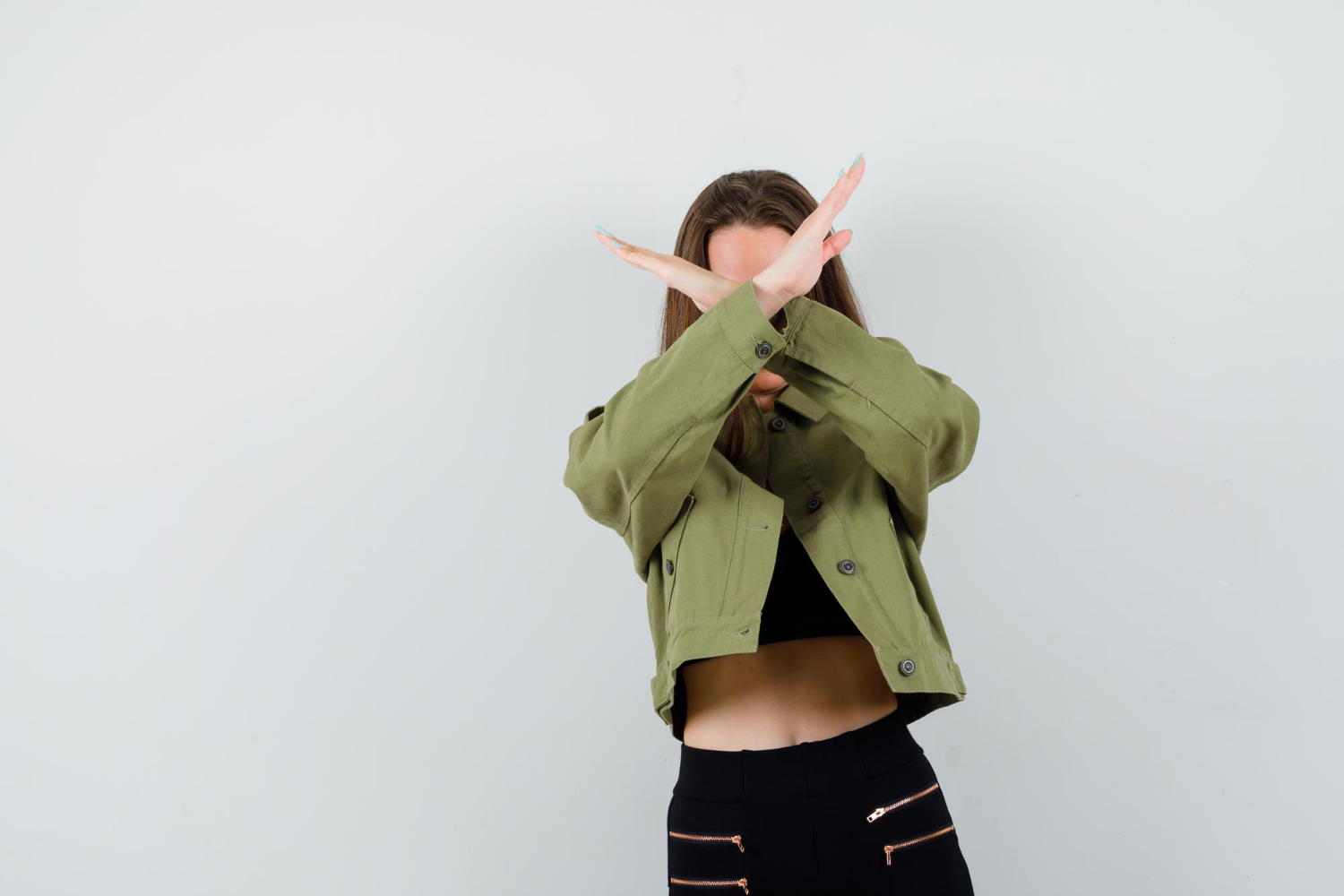Posing may seem effortless in a final image, but the truth is, it takes skill, intention, and awareness. In my experience as a model, I’ve come to realize that even the smallest adjustments in posture or expression can elevate a photo, or derail it. Understanding the most common posing mistakes and how to avoid them has helped me develop greater control in front of the camera and strengthened my overall confidence during shoots.
Let me take you through the most frequent posing missteps I’ve observed and how I’ve learned to correct them. Whether you’re new to modeling or looking to refine your techniques, this guide will serve as a practical reference for striking poses that work.
Slouching or Poor Posture
One of the biggest mistakes I made early on was forgetting to be conscious of my posture. Slouching, rounded shoulders, and disengaged core muscles make the body look lazy or uncomfortable. Even if you’re going for a casual or relaxed look, bad posture can ruin the line of the body and detract from the styling.
Instead, I always remind myself to stand tall with shoulders gently back, spine elongated, and core activated. This doesn’t mean rigid or unnatural stiffness, just being alert and connected to my body’s alignment.
Locked Joints and Stiff Limbs
It’s tempting to think that posing means holding your body in place. That led me to a common mistake: locking my elbows and knees or keeping my hands frozen. Locked joints can create tension that reads awkwardly in photos. They also stop the body from creating natural, flowing lines.
To solve this, I began keeping a slight bend in my elbows, softening my knees, and thinking of my hands and fingers as extensions of movement rather than static tools. Flexibility in the limbs keeps my poses feeling alive.
Forgetting Facial Expression
Another posing mistake that many models, including myself, tend to make is neglecting the face while focusing on body position. A well-angled pose loses its impact if the facial expression is disconnected, blank, or forced.
I’ve learned to keep a mental library of facial expressions ready. Whether I’m aiming for fierce, joyful, sultry, or curious, I let that emotion travel through my whole body. Even a subtle smile or a raised brow can enhance the energy of a pose.
Overthinking the Pose
Trying too hard to get everything perfect can backfire. I used to concentrate so intensely on nailing a specific pose that I’d lose spontaneity and look robotic in the final images. It was only when I started letting go and trusting the photographer’s direction that my poses became more organic.
Now, I treat each pose like a moment in motion. I transition fluidly and allow the camera to capture the in-between frames. These transitional moments often turn out to be the most striking.
Awkward Hand Placement
Hands can be tricky. I’ve placed them in my pockets, rested them on my hips, or tried to create shapes, but often ended up looking stiff or unsure. One of the worst mistakes is having “dead hands,” where they hang aimlessly or look uncomfortable.
What helps me is giving the hands purpose. I place them on my body lightly, tuck them into garments naturally, or let them interact with a prop. Soft fingers, not splayed or clenched, make a big difference in how refined the hands look.
Losing Awareness of Angles
When I first stepped into modeling, I didn’t understand how my body translated to the lens. Not knowing my angles meant I sometimes posed in ways that flattened my features or shortened my frame. It wasn’t until I practiced in front of a mirror and studied test shots that I became aware of what worked best for my proportions.
Now, I know that certain head tilts, chin angles, or torso twists make my features pop. Being angle-aware helps me flatter my natural shape and present variety during a shoot.
Over-Posing
Trying to cram too many dramatic movements or overly intricate gestures into a single frame can be distracting. I’ve fallen into the trap of over-posing, especially in editorial shoots where creativity is encouraged. But too much going on can lead to visual clutter and confusion.
Keeping things clean and focused, with one idea per pose, has worked better for me. I allow space for storytelling in my eyes, the angle of my neck, or the positioning of my feet without going overboard.
Lack of Variation
Repeating the same poses over and over again is another pitfall. Early on, I found myself defaulting to the same head tilt or hand position in every frame. It felt safe, but my portfolio lacked diversity as a result.
To fix this, I challenge myself to think in series. I might start with a basic standing pose, then add a twist, then shift my weight, then raise an arm, all in quick succession. It creates a visual rhythm that looks more dynamic in a set of photos.
Ignoring Wardrobe Interaction
Sometimes, I used to forget the role that clothing plays in a pose. I’d twist my body in ways that obscured details of the outfit, created unflattering bunches, or distracted from key styling elements.
I’ve since learned to work with the clothes. If I’m in a flowy dress, I’ll let it catch the wind or sway with my steps. If the jacket has strong shoulders, I highlight that in my stance. Being mindful of how to complement the wardrobe makes me a better collaborator on set.
Being Unaware of Light Direction
Lighting is one of the most important elements in a photoshoot, and not understanding how it interacts with a pose can be a huge mistake. Early on, I often posed with my face or body away from the light, resulting in shadows that didn’t do me justice.
Now, I’m always aware of where the main light is coming from. I angle myself to catch highlights where I want them, on my cheekbones, jawline, or collarbones, while avoiding harsh shadows on my face or body unless they’re intentional.
Holding the Same Expression for Too Long
Even with great posture and angles, holding the same expression across multiple frames creates monotony. I used to stick with a single “go-to” face because I knew it worked. But when I saw the final photos, everything looked too similar.
What changed for me was learning to animate my expressions. I cycle through subtle emotional shifts, soft smiles, intense gazes, playful grins, within a short shoot. It adds range to the images and shows that I can take direction and adapt.
Forgetting to Breathe
It sounds simple, but I used to hold my breath without realizing it during tense or critical moments in front of the camera. This would tighten my facial muscles and make my body stiff.
Breathing deeply and slowly helps me relax and connect to the mood of the shoot. It also keeps my energy consistent. Even during high-concept or fast-paced shoots, maintaining calm breath keeps my expression and posture fluid.
Not Listening to Photographer Cues
Another common posing mistake is being so consumed with your own movements that you tune out the photographer. I’ve learned that some of my best shots came from moments when I listened closely and responded to real-time feedback.
Now, I maintain an open and collaborative energy on set. I listen to cues, take direction without ego, and make adjustments quickly. The more connected I am with the creative team, the better the photos turn out.
Forgetting the Mood or Narrative
Each shoot has a concept or story, even if it’s just implied. Ignoring that narrative results in disconnected poses that don’t fit the vibe. I used to think it was just about looking good, but that’s not enough.
I always ask what the shoot is trying to convey. Am I mysterious? Powerful? Delicate? This narrative becomes my internal guide, and every pose, glance, and movement aligns with it.
Being Afraid to Experiment
One of the more subtle mistakes is playing it too safe. While professionalism is essential, fear of experimenting can make your posing feel flat. I used to worry that a bold gesture or unusual angle might not work, but sometimes, those risks lead to the most compelling images.
Today, I treat every shoot as an opportunity to stretch creatively. I don’t shy away from trying unexpected ideas, and even if something doesn’t work, I’ve gained experience and built trust with the photographer.
Conclusion
The art of posing goes far beyond standing still in front of a camera. It’s a dynamic conversation between body, expression, styling, light, and intention. By identifying these common posing mistakes and how to avoid them, I’ve been able to transform the way I approach every shoot.
What helped me most was being self-aware, coachable, and curious. I stay present in my body, stay in tune with the mood of the session, and treat posing as an evolving craft. Whether you’re just starting out or refining your skills, always remember that posing isn’t just about looking good, it’s about telling a story with precision and grace.

